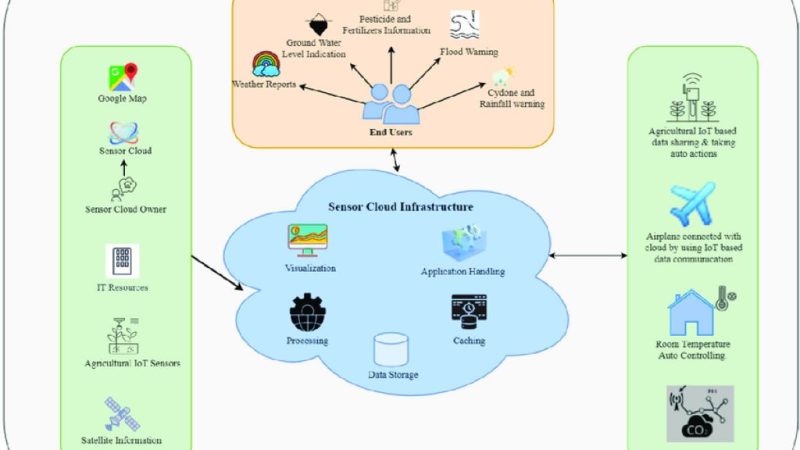Computer enthusiasts and professionals often encounter performance issues that stem from memory and processor communication problems. Understanding FCLK settings becomes crucial when optimizing system performance. The Engineers Network community frequently discusses these technical challenges, helping users resolve complex hardware configurations.
Modern AMD processors rely heavily on proper FCLK configuration for optimal performance. However, many users struggle with stability issues, reduced performance, or system crashes when these settings aren’t configured correctly. This comprehensive guide addresses common FCLK problems and provides practical solutions.
Understanding FCLK Fundamentals
Before diving into troubleshooting, it’s essential to grasp the basics. What is fclk frequency relates directly to how your processor’s Infinity Fabric communicates with system memory. This internal clock speed affects overall system performance significantly.
FCLK, or Fabric Clock, operates at half the memory speed in most configurations. For example, DDR4-3200 memory typically runs with an FCLK of 1600MHz. This relationship ensures synchronized communication between different processor components.
When FCLK operates correctly, data transfers smoothly between the CPU cores, memory controller, and other integrated components. Problems arise when this synchronization breaks down, leading to various performance and stability issues.
Common FCLK Problems and Symptoms
Several telltale signs indicate FCLK-related issues in your system. Understanding these symptoms helps identify problems before they cause significant disruptions.
System instability often manifests as random crashes, blue screens, or unexpected restarts. These issues typically occur during memory-intensive tasks or gaming sessions. Users may notice applications closing unexpectedly or experiencing frequent freezes.
Performance degradation represents another common symptom. Systems may feel sluggish despite having adequate hardware specifications. Memory-related benchmarks often show reduced scores compared to expected values for your hardware configuration.
Boot failures can also indicate FCLK problems. Systems might refuse to start, display memory training errors, or require multiple restart attempts before successfully booting. These issues often worsen over time if left unaddressed.
Memory Training and FCLK Synchronization
Memory training plays a crucial role in FCLK stability. This process occurs during system startup, establishing optimal communication parameters between the processor and memory modules. Training failures often indicate FCLK configuration problems.
During memory training, the system tests various timing parameters and voltage levels. This process ensures reliable data communication at the specified frequencies. Successful training results in stable operation, while failures lead to reduced performance or system instability.
FCLK synchronization affects memory training success rates significantly. When FCLK operates at inappropriate frequencies, memory training becomes unreliable or fails completely. This relationship explains why memory overclocking sometimes causes unexpected stability issues.
Voltage Considerations and Power Delivery
FCLK operation depends heavily on proper voltage supply and power delivery. Insufficient or unstable voltages cause communication errors, leading to various system problems. Understanding voltage requirements helps resolve many FCLK-related issues.
VSOC (System on Chip voltage) directly affects FCLK stability. This voltage supply powers the Infinity Fabric and memory controller components. Inadequate VSOC levels cause FCLK instability, particularly at higher frequencies.
VDDG voltages also influence FCLK operation. These voltages power specific processor subsystems involved in memory communication. Proper VDDG levels ensure reliable FCLK operation across different frequency ranges.
Power supply quality affects FCLK stability indirectly. Poor power delivery creates voltage fluctuations that disrupt sensitive FCLK circuits. High-quality power supplies with stable voltage outputs improve FCLK reliability significantly.

Motherboard Compatibility and BIOS Settings
Motherboard design significantly impacts FCLK performance and stability. Different motherboards handle FCLK frequencies differently, affecting achievable performance levels and stability margins.
BIOS implementations vary between motherboard manufacturers. Some BIOS versions provide extensive FCLK tuning options, while others offer limited configuration possibilities. Keeping BIOS firmware updated often resolves FCLK compatibility issues.
Memory trace design on motherboards affects FCLK operation. Poor trace routing or inadequate power delivery circuits limit achievable FCLK frequencies. High-end motherboards typically provide better FCLK support through superior electrical design.
Processor Silicon Quality and Limitations
Individual processor samples exhibit different FCLK capabilities. This variation, known as silicon lottery, affects maximum achievable FCLK frequencies and required voltages for stable operation.
Some processors achieve high FCLK frequencies easily, while others struggle with stability at standard settings. Understanding your processor’s capabilities helps set realistic expectations for FCLK performance.
Manufacturing process variations create these differences between individual processors. Newer processor revisions often show improved FCLK capabilities compared to earlier versions of the same model.
Step-by-Step FCLK Troubleshooting Process
Begin troubleshooting by resetting BIOS settings to default values. This step eliminates configuration errors and provides a stable baseline for further testing. Default settings typically use conservative FCLK frequencies that work reliably across different systems.
Test system stability using default settings before making any changes. Run memory tests and stress testing applications to verify basic functionality. Stable operation at default settings confirms that hardware components function correctly.
Gradually increase FCLK frequencies while monitoring system stability. Small incremental changes help identify maximum stable frequencies without causing system damage. Document successful configurations for future reference.
Advanced FCLK Optimization Techniques
Experienced users can employ advanced techniques to maximize FCLK performance. These methods require careful attention to detail and thorough stability testing to avoid system damage.
Manual voltage tuning allows fine-tuning FCLK operation for optimal performance. Careful voltage adjustments can improve stability margins or enable higher frequencies. However, excessive voltages may damage processor components permanently.
Memory timing adjustments complement FCLK optimization efforts. Looser memory timings often improve FCLK stability, particularly at higher frequencies. Finding the optimal balance between FCLK frequency and memory performance requires experimentation.
Monitoring Tools and Diagnostic Software
Various software tools help diagnose FCLK problems and monitor system performance. These utilities provide valuable information for troubleshooting and optimization efforts.
Hardware monitoring applications display real-time FCLK frequencies and related voltages. This information helps identify stability issues and verify configuration changes. Regular monitoring prevents potential problems from causing system damage.
Memory testing software validates FCLK stability under different load conditions. Comprehensive testing reveals intermittent issues that might not appear during normal usage. Thorough testing ensures long-term system reliability.
Prevention and Maintenance Strategies
Preventing FCLK problems requires proactive system maintenance and careful configuration management. Regular monitoring and testing help identify issues before they cause significant disruptions.
BIOS updates often include FCLK improvements and bug fixes. Staying current with firmware updates helps maintain optimal system performance and compatibility. However, always backup working configurations before updating BIOS firmware.
Environmental factors affect FCLK stability over time. Temperature fluctuations, dust accumulation, and component aging can impact performance. Regular system cleaning and temperature monitoring help maintain stable operation.
Conclusion
FCLK troubleshooting requires systematic approaches and careful attention to various system components. Understanding the relationships between FCLK, memory operation, and system stability enables effective problem resolution. Proper voltage configuration, motherboard compatibility, and processor limitations all influence FCLK performance.
Successful FCLK optimization balances performance gains with system stability requirements. Conservative approaches typically provide better long-term reliability compared to aggressive overclocking attempts. Regular monitoring and maintenance help preserve optimal system performance over time.
The troubleshooting steps outlined in this guide provide structured approaches to resolving common FCLK issues. Starting with basic configuration resets and gradually implementing advanced techniques ensures safe and effective problem resolution.
Frequently Asked Questions
What causes FCLK instability in AMD systems? FCLK instability typically results from inadequate voltages, poor motherboard power delivery, or aggressive frequency settings that exceed processor capabilities. Environmental factors like temperature and component aging also contribute to stability issues.
How do I determine my processor’s maximum FCLK frequency? Start with conservative settings and gradually increase FCLK while testing stability. Most processors handle 1600-1800MHz reliably, but individual samples vary significantly. Thorough stress testing reveals actual capabilities for your specific hardware.
Can FCLK problems damage my computer permanently? Improper FCLK configuration rarely causes permanent damage when using reasonable settings. However, excessive voltages combined with high frequencies may degrade processor components over time. Conservative approaches minimize risks while maintaining good performance.
Why does memory overclocking sometimes reduce FCLK stability? Higher memory speeds require increased FCLK frequencies to maintain synchronization. This relationship can push FCLK beyond stable operating ranges for some processors. Balancing memory speed with FCLK capabilities often requires compromise.
Should I prioritize FCLK frequency over memory speed? FCLK frequency generally provides more significant performance benefits than raw memory speed. Maintaining FCLK synchronization with memory typically yields better results than running high memory speeds with desynchronized FCLK operations.
Read More:





